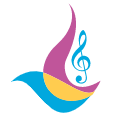The Magic of Piano Chords (3)
This story is a third in a series about piano chords. To understand it better, I recommend that if you haven’t done it already, please read the first and the second stories prior to this one.
In this story I’d like to demonstrate how chords, in addition to providing a great harmony, help keep the right rhythm for the song.
Let’s start again by listening. If you press on this link (listen here) you can hear a piano version of Auld Lang Syne, possibly the most famous New Year’s song.
As explained previously, our method defines chords as 3 keys played in succession. This works beautifully for songs like Le Cygne (The Swan) which was introduced in the previous story. The Swan is played in groups of 3, a rhythm that is called 3/4. Most songs, however, use a different rhythm — 4/4.
Instead of being played as:
Ta-Ta-Ta … Ta-Ta-Ta … Ta-Ta-Ta … Ta-Ta-Ta
They are played as:
Ta-Ta-Ta-Ta … Ta-Ta-Ta-Ta … Ta-Ta-Ta-Ta
So let’s start. We will use the same notation as we did before in order to define the keys. This time, our song also uses a part of a higher octave which we mark with the + signs:
To play the melody of the beginning of this piece simply play this sequence:
Note that some keys are followed by a short pause while others have a longer pause. The underlines under the keys represent this pause (also called note length). Soon we will see how the chords can also help us creating the right rhythm.
The beginning of this piece uses three chords: The F chord, the C chord, and the B♭ chord. we will play them with only 3 fingers of the left hand: The pinky, the index (pointing) finger and the thumb. The diagram below explains where to place your fingers and in what order.
Note that the B♭ chord differs from the other chords since it uses a combination of black and white keys.
And as we did before, we will now put the melody and the chords together. The melody is now coupled with the chords, which are added in the right place:
If you read the previous two stories in this series you are familiar with the duration signs, ┤and ┴┤.
A chord with a ┤ is played by pressing all 3 keys in succession (one after the other). A chord with a ┴┤ is played by pressing the keys to match the melody keys above the markings Sometimes the middle chord key is played in between melody keys).
The last chord uses a slow chord duration sign, ╡, that is simply played slower than the other chords.
In order to keep the rhythm, we sometimes add melody keys in between the chords and at other times we make a short pause, marked with ⋯. As a result, we can see that the song can be viewed as groups of 4 bits:
Listen to the song a couple of times, using the link (here it is again), and try to compare it with the printed sequence above. Then try to repeat it on the piano.
If the example above seems difficult, don’t worry. We recommend that you look into our a new, innovative language called PENTA that it is explained here. By using PENTA, you can play almost any song or classical piece. Anyone who invests, in earnest, a couple of hours a week studying this method, should be able to play easy pieces with both hands within 6 months, and even reach prima-vista (play on first sight) within less than a year! All the learning materials are free, so Come on and join the fun!
